Gardening for the first time can be daunting, especially in Alaska with the added challenges of a short growing season, sometimes too-cool weather, and sometimes very hot weather. Although the internet provides a wealth of information, when you’ve never done something before, sometimes you don’t even know what questions to ask. Here are some questions you may not have known to ask.
The first thing to think about when starting a garden is where are you going to put it?
An ideal garden spot would get eight or more hours of direct sunlight; have rich, loose soil free of weeds, rocks and roots; be a good distance from trees and shrubs; have an easily accessible water source; and have an 8- foot-high fence to keep moose and other pests out. That’s the ideal, but many of us garden in less than ideal spots because that’s what we have available. However, it’s something to work toward or arrange if you can.
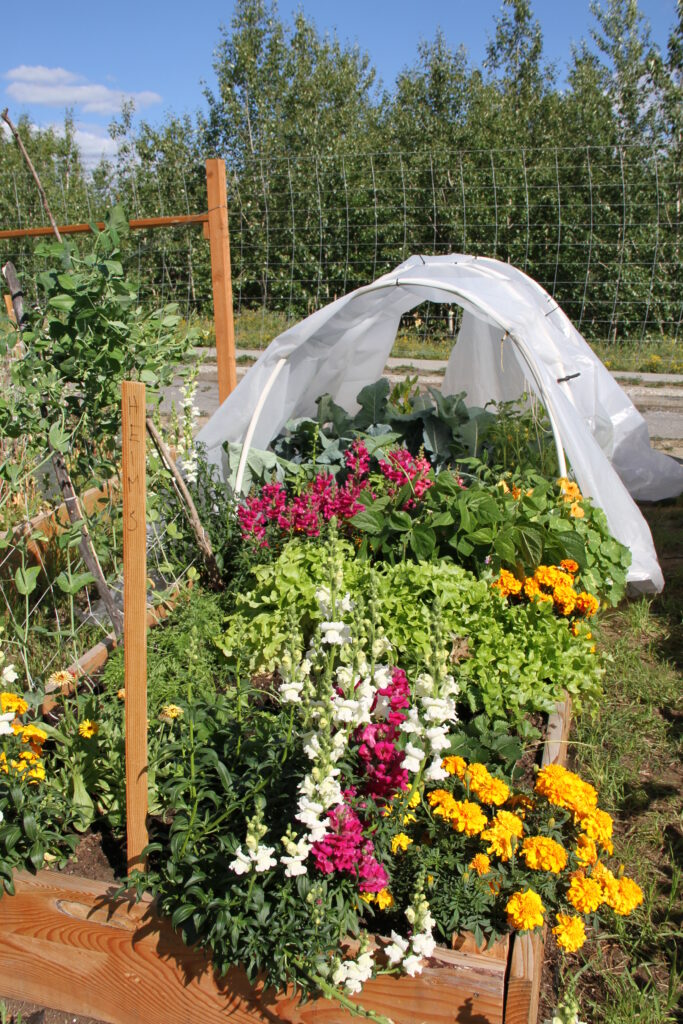
The next question to ask is do you want to grow in containers, raised beds, or in-ground?
Container gardening can be a good option for those who do not have a spot to plant a garden in the ground. But containers can be challenging to keep watered. A container may need to be watered two to three times a day in the heat of the summer. You’ll want to make sure you use good potting soil rather than just digging up soil you may have in your backyard. For one, that type of soil may be very heavy and hard to move. Also, you need to optimize growing conditions in containers because of the added stress on plants.
Raised beds can be a nice route for new gardeners as well. They can be made out of a variety of materials including wood, cement or metal (anything nontoxic that will not rot quickly). They require less watering than containers, but still more than gardening in the ground. There are a few advantages to raised beds. They warm up and retain heat in the summer; they can be placed on a deck, on rocky soil, or on top of a lawn; and they minimize the amount of soil you need to bring in and keep good soil from getting trampled on and compacted.
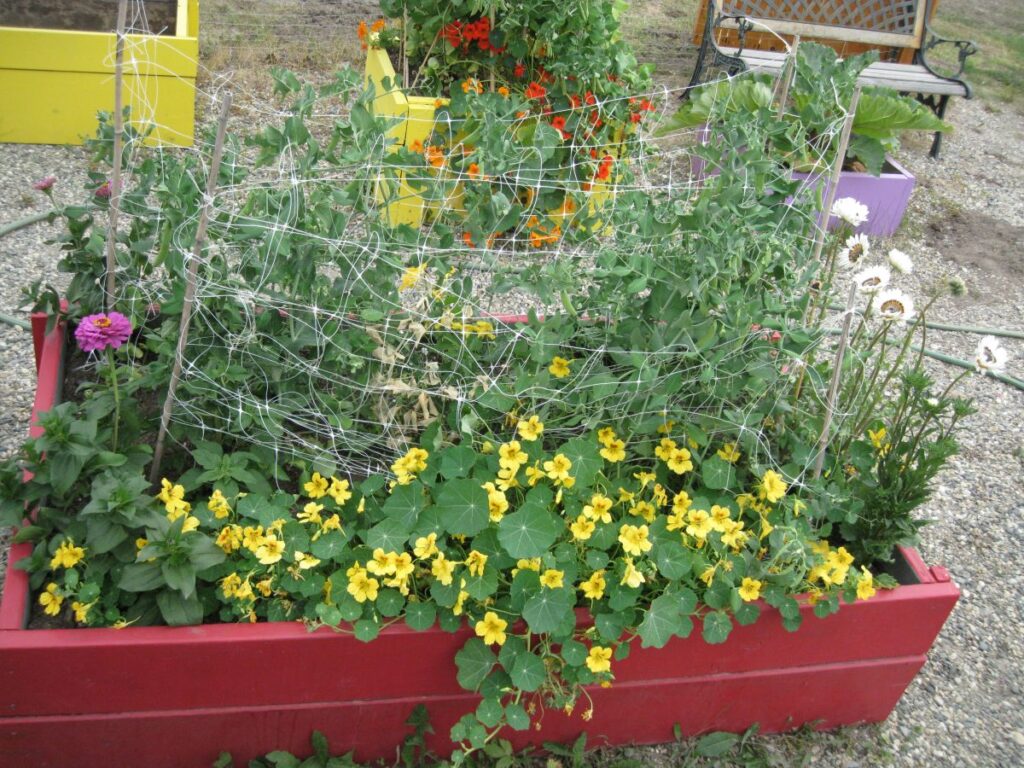
Another advantage of raised beds is that there are lots of ways to make the aisles incompatible with weeds. For example, the walkways between the raised beds could be cement, rock, mulch or weed fabric. Weeding walkways is not a fun task. Keep your growing space for growing and your walkways for walking!
Finally, if you do have a spot to garden in the ground, this can be a good way to go for deep-rooted crops like potatoes in particular and also may require less watering than containers or raised beds. If you get tree roots or weeds growing in your garden, you can deal with them easier as well as rototill if needed.
What can you grow?
Once you’ve decided where to put your garden, the next big decision is what to grow. The easiest things to grow in Alaska are things that mature quickly and don’t mind cool weather. That said, even though radishes and spinach are some of the fastest growing, quickest-to-mature crops, they have a pesky habit of going to seed or in other words bolting because of our long, sometimes hot, days.
Some of the easiest crops to grow are kale, peas, snap beans, lettuce, beets, carrots, turnips and potatoes. All of those crops can be directly seeded or planted outside in the ground as opposed to many crops that need to be planted indoors to give them a head start so that they mature before the growing season ends: zucchini, broccoli, cabbage, tomatoes and many flowers, to name a few.
Corn, winter squash, giant cabbage, Brussels sprouts, peppers and eggplants can be grown, but they are a bit more challenging because they take longer to mature and/or require heat and sun to mature. As a first-time gardener, try the easy crops first before you tackle more challenging crops.
Personally, my favorite things to grow are ones that are best eaten fresh and ones that I can harvest and eat all summer long. I talk about choosing crops wisely for a small garden previously.
What varieties should you choose?
Not only do you need to choose crops, you also need to choose which variety of each crop to grow. There are many varieties of carrots, for example. Some mature early, some late, some are purple, some yellow, some are sweeter, some are better for storage. At the University of Alaska Fairbanks, we trial how different varieties of carrots and many other crops perform so you can consult the reports for what has performed best.
On this blog, you can find growing guides for vegetables, berries, and flowers.
Another key to successful gardening is timing — when you plant, water, fertilize, weed and harvest matters.
When should you plant?
You should plant your garden as early as you can, which means after you are reasonably assured it is not going to freeze at night. Some people use frost cloth so that they can protect the plants from a light frost and plant earlier. Sometimes frosts can be unpredictable but you can base your planting date off the average last spring frost as well as a look at the weather forecast.
According to the Alaska Garden Helper, Fairbanks’ growing season or days above 32 degrees Fahrenheit is from May 9 to September 23. Of course that is an average, so sometimes it’s going to be later and sometimes earlier. You can look up the average growing season wherever you live in Alaska on the Alaska Garden Helper. You can view past, present, and predicted growing season information.
When you’re planting indoors, it’s important to start plants at the right time. What is the right time? The right time basically has to do with how big the plant will be when you plant outside—not too small, but also not too big for its britches, so to speak (or container).
I like to use Johnny’s Seeds Calculator. It’s not perfect for Alaska. For instance, the calculator includes some crops that will likely not mature in Alaska. Even if you start melons and okra indoors at the time the calculator recommends, that doesn’t mean they will mature enough to be harvested in Alaska due to the length of our growing season and amount of heat we get.
Be sure to give plants enough space when you plant! And you can often plant multiple crops of short-maturing crops like lettuce and radishes as well.
Is your soil good for growing?
Getting a soil test is one way to assess if your soil is good for growing. The test will determine your soil pH (is it acidic or alkaline or close to a neutral pH of 7? Veggies like a neutral pH of 7. It will also help you determine your overall nutrient levels. You can find a bunch of information on soil testing here.
If you’re buying potting soil or topsoil, then you won’t need to test your soil, initially. The reality is that many gardeners successfully garden without getting a soil test but not without adding fertilizer to their garden. Composting is a great way to add organic matter to your soil. It adds a little bit of nutrients as well as helps your garden retain moisture and nutrients and release them when your plants need it. You can compost much of the inedible plants your garden produces like broccoli leaves, weeds that haven’t gone to seed, and pea plants as well as food scraps, lawn clippings and raked leaves. Rotating crops is another great thing to do. That means planting crops in the same family in a different place on say a three year rotation. Different plants tend to use different nutrients in the soil. This may help reduce pests and diseases as well.
How much and what type of fertilizer should you add?
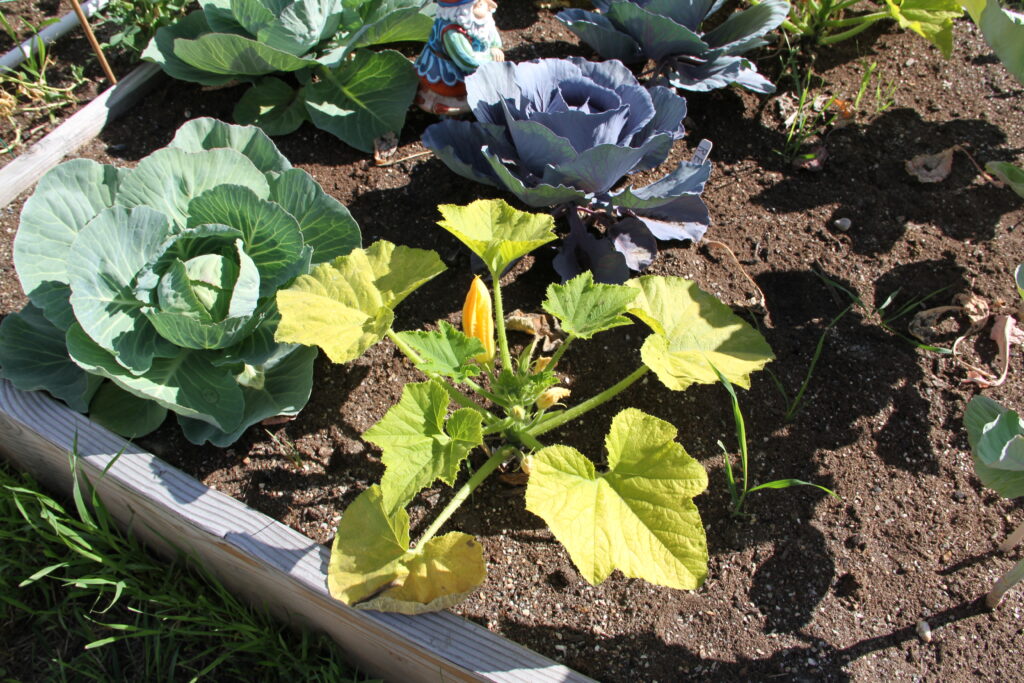
Fertilizer comes in many forms. There are organic fertilizers or conventional Some are slow-release that can be added once at the beginning of the season. Some are Water-soluble and are mixed with your water on a weekly basis.
A good tell that your plants do not have enough fertilizer is that they are yellow or otherwise discolored. Most fertilizers identify the levels of nitrogen, phosphorus and potassium (N-P-K) on their packaging. The higher the numbers, the higher the concentration. Often, organic fertilizers have a lower concentration of N-P-K and rather than having all three of the primary nutrients, may only have one nutrient, although often they have more micronutrients.
They tend to release more slowly than conventional fertilizers. If you add slow-release fertilizer in the spring, you shouldn’t have to add anymore fertilizer and it will limit excess run off into lakes, streams, and rivers.
It could also save you money because you’re not wasting fertilizer and it should ensure your plants have exactly what they need.
When should you water?
You can water your garden with a watering can, hose, sprinkler, soaker hose or drip irrigation. Right after you plant seeds, you need to keep them moist until they germinate. This can be hard when we have hot, windy springs like we did in 2022. I found myself watering my seeds three times a day to keep the soil consistently moist.
When you water a container, you want to make sure there are a couple inches of space between the soil and the top. You’ll fill the container once or twice. When you see water running out the bottom, you’ll know you’ve watered enough.
Raised beds require a similar soaking. If you’re watering with a hose in an in-ground garden, it can be difficult to adequately soak the soil as you can get water running off because water comes out so quickly. Drip irrigation is an ideal way to get water only to the plants you’re growing (not to the weeds!) and waters slowly enough that you’re not washing away soil — especially important right after you’ve planted seeds — you don’t want to wash away your seeds or small seedlings.
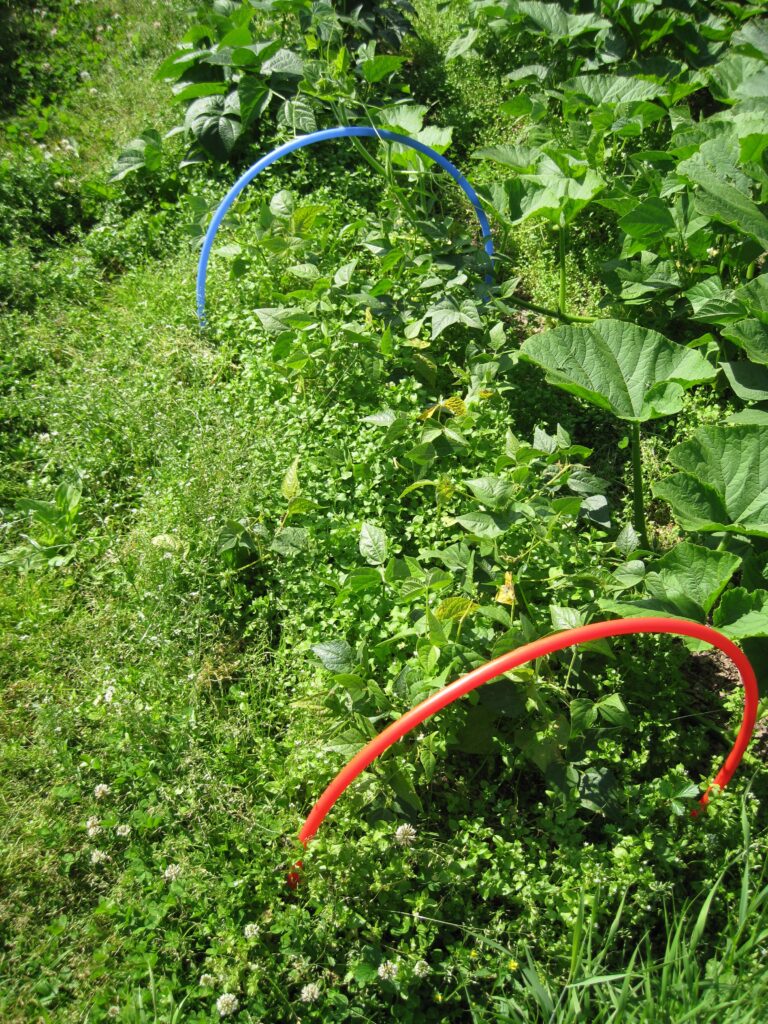
When should you weed?
The best time to weed is as soon as you see a weed when it’s small. The next best time is to pull weeds before they go to seed. The last best option is to pull weeds after they have gone to seed. When your plants are small, it can be difficult to decide what is a weed and what is not. Labeling what you planted and learning to recognize plants when they’re small will really help you get ahead of the weeds before they take over your garden. It’s especially important with things like carrots which have a slow start. Transplants can help give your garden a head start as well.
When should you think about pests?
Preventing pest and disease problems and identifying pests and beneficial insects early is always easier than when an outbreak occurs.
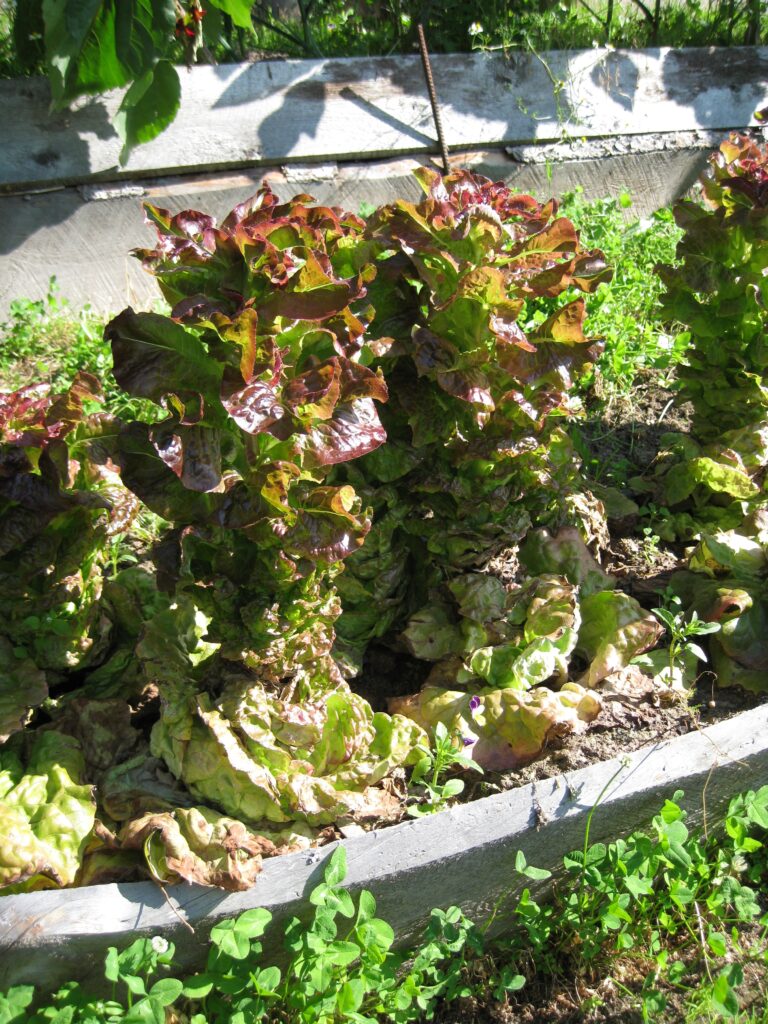
When should you harvest?
As mentioned earlier, plants bolt — or go to seed — incredibly quickly. For some crops like radishes and spinach, you may only have a couple days’ window to harvest the crop before it bolts. Other crops get woody or bitter. Zucchini can grow gigantic seemingly overnight. Most people won’t mind a giant zucchini in a quick bread, but in a stir fry, they are best when they are smaller.
How do you remember what you learned from last year?
Keep a garden journal so that you remember what grew well, what you liked, and what didn’t so well. You don’t want to repeat the same mistakes every year. Record what you like and what performs well in your garden. Keep track of what crop and variety you planted and when, productivity level and harvest dates, if you liked it or not or had too much or too little.
Have you heard of the Cooperative Extension Service?
At UAF Cooperative Extension, we:
– Answer questions,
– Publish informational handouts,
– Create videos, and
– Teach hands-on and virtual classes.
You can count on our resources being research-based and free of advertising. Cooperative Extension is a resource across the U.S., so wherever you go there is someone with local gardening or farming expertise there to help you.
Finally, the best advice for never, ever gardeners is to jump right in and give it a try.
Published in the Fairbanks Daily Newsminer May 14, 2023.